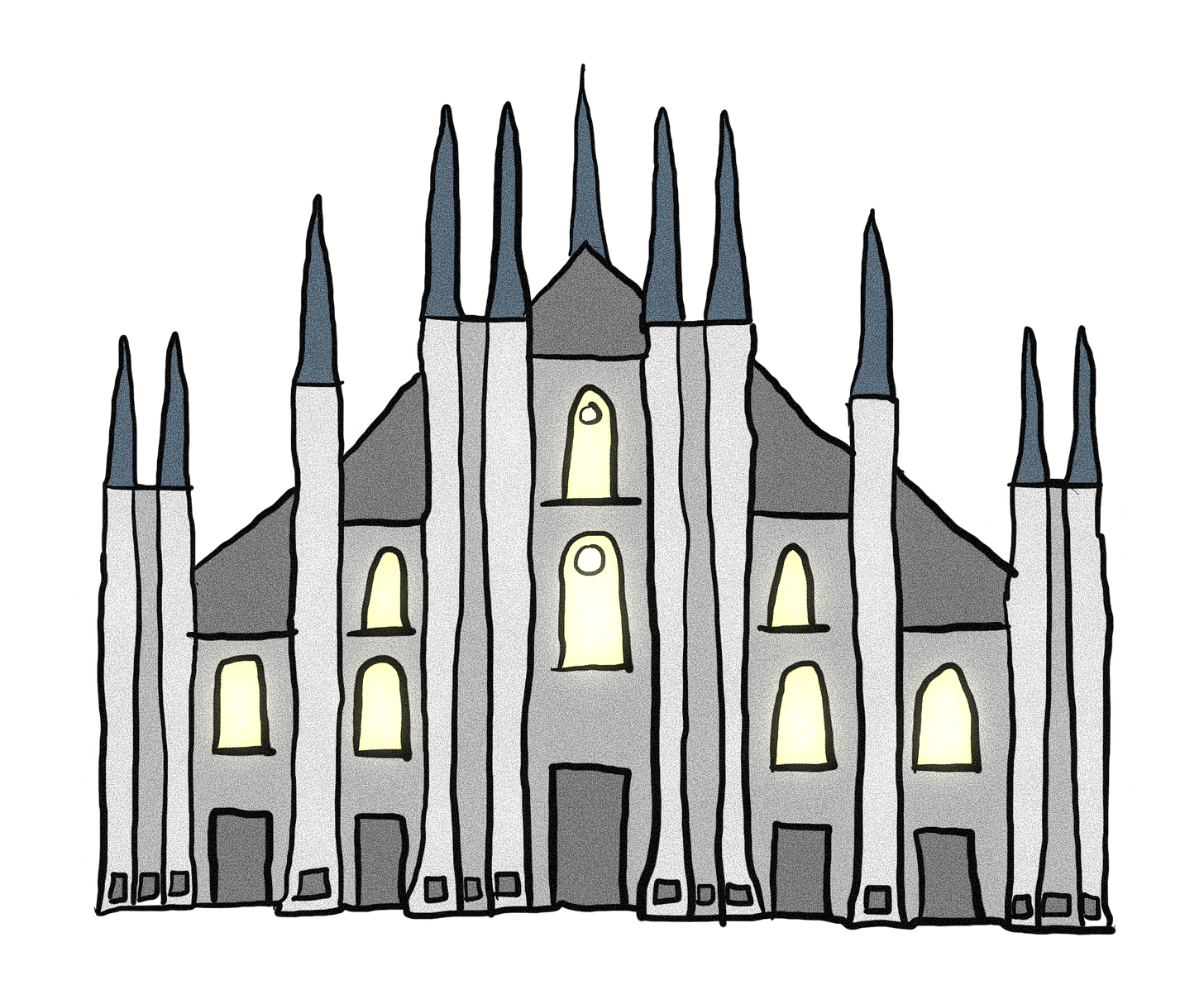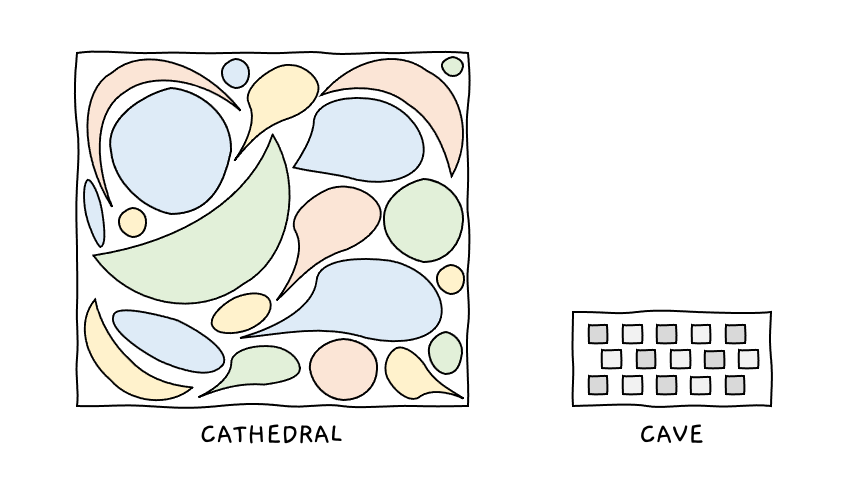22 September 2022
Caves and Cathedrals
How does our environment shape our thoughts?
My favorite short story is “Cathedral” by Raymond Carver. Carver is known for his grounded, minimalist writing that depicts working-class Americans in the 1980s. This style created a strong voice for the characters in “Cathedral.” In the story, a blind man taught a close-minded man to draw a cathedral—an experience that quietly nudged the man toward empathy, curiosity, and awe.
The cavernous, ornate interiors of cathedrals have this effect on us: We cannot help but look up and feel a sense of wonder.The Cathedral Effect
Architects leverage the “cathedral effect” to create environments conducive to the function of the space. Big, open spaces inspire more abstract, open-minded thoughts. With their high ceilings and spires, cathedrals spur us to gaze upward and consider the heavens and things larger than ourselves. We feel freer, unconfined.
The opposite is true: Small, enclosed spaces spur more concrete, single-minded thoughts. Think of an office or a classroom—the low ceiling contains our minds, keeping them from wandering into the clouds. We’re more focused and better positioned to solve problems or complete tasks.
Put simply:
- High Ceiling → abstract thinking and creativity
- Low Ceiling → concrete thinking and detail-oriented tasks
- High Ceiling → divergent thinking (brainstorming, writing)
- Low Ceiling → convergent thinking (condensing, editing)
Time in the Cave
I prefer high ceilings, as I love the feeling of a roaming mind, and I imagine most people feel this way. With this natural preference, it’s easy to believe that “cathedral” environments are necessary for creative work and justify becoming an insufferable diva about one’s working environment. But Stephen King—one of the most prolific and profitable fiction writers of our age—feels different.
“It starts with this: put your desk in the corner, and every time you sit down to write, remind yourself why it isn’t in the middle of the room. Life isn’t a support system for art. It’s the other way around.”
— Stephen King, On Writing (2002)
King doesn’t allow environmental factors to excuse us from doing the work. His perspective is that work—especially creative work—is a “support system” for life. Like a furnace, our work should be tucked humbly in the basement, cranking away to support the rest of our lives. It’s a humble, healthy perspective.
Spending time in the “cave”—a place with a low ceiling—is necessary to complete one’s work. To make anything, we need time and space to put in the effort and focus on the task, whether writing a horror novel or filing tax reports (another kind of horror).
We shouldn’t use a cathedral for everything; too much time in a cathedral can numb us to its effects. Instead, we could occupy different environments for different activities.
TL;DR
Cathedrals (high-ceiling environments) are best for abstract thinking, creativity, and inspiration. Caves (low-ceiling environments) are best for concrete thinking, detail-oriented tasks, and getting things done.
Use cathedrals sparingly, but often enough to get inspired. Our work is like a furnace, performing best in a cave.

